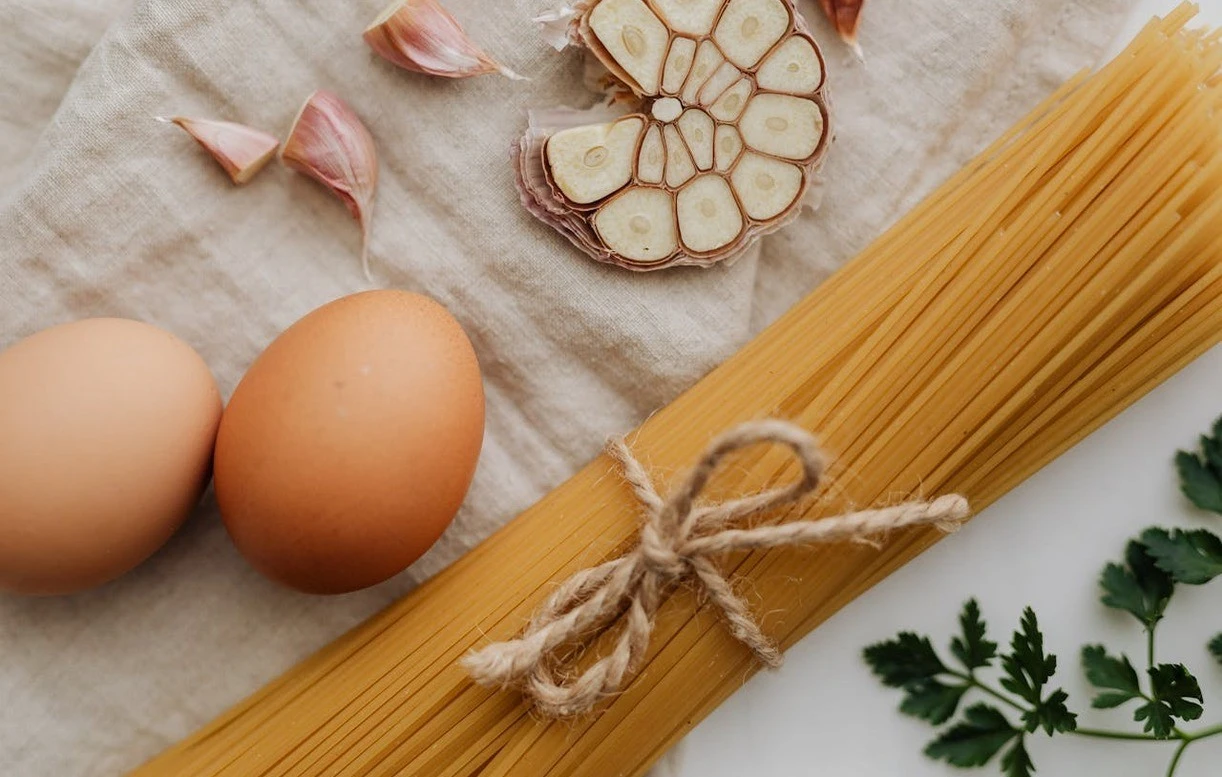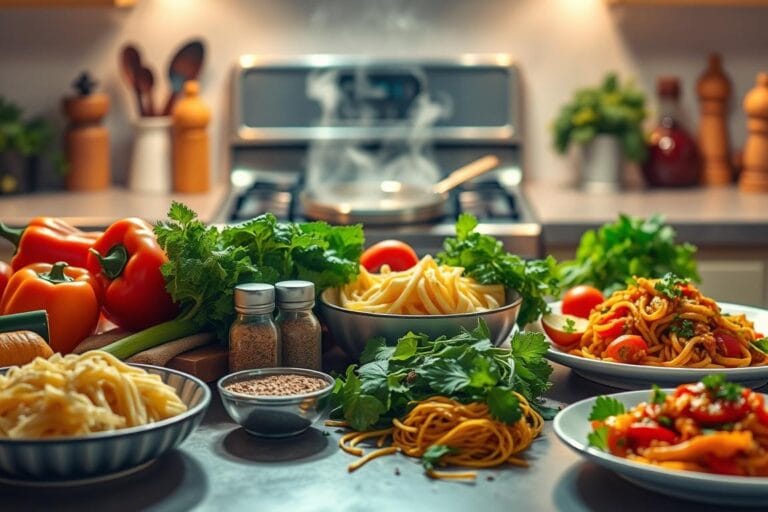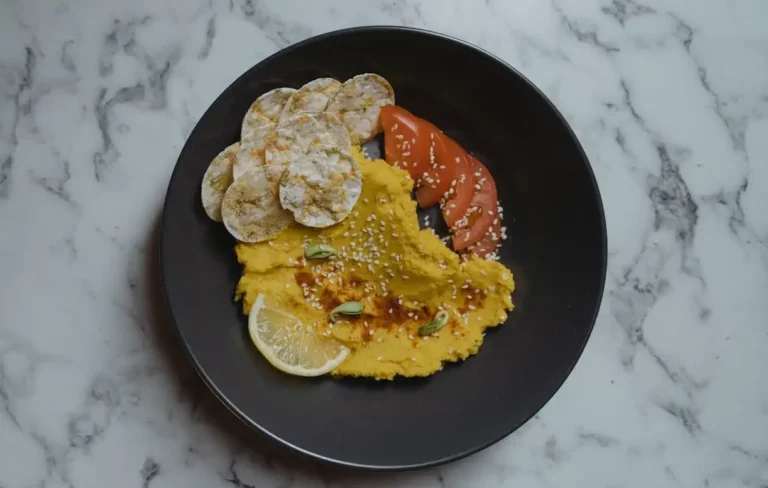How to Cook Vegetarian Spaghetti: Secrets of Spaghetti Pasta Recipe Without Meat
Vegetarian cooking is a delightful way to explore flavors and nourish your body. You can create vibrant dishes without meat, focusing instead on vegetables, grains, and legumes. This cooking style is not only kind to animals but also beneficial for your health.
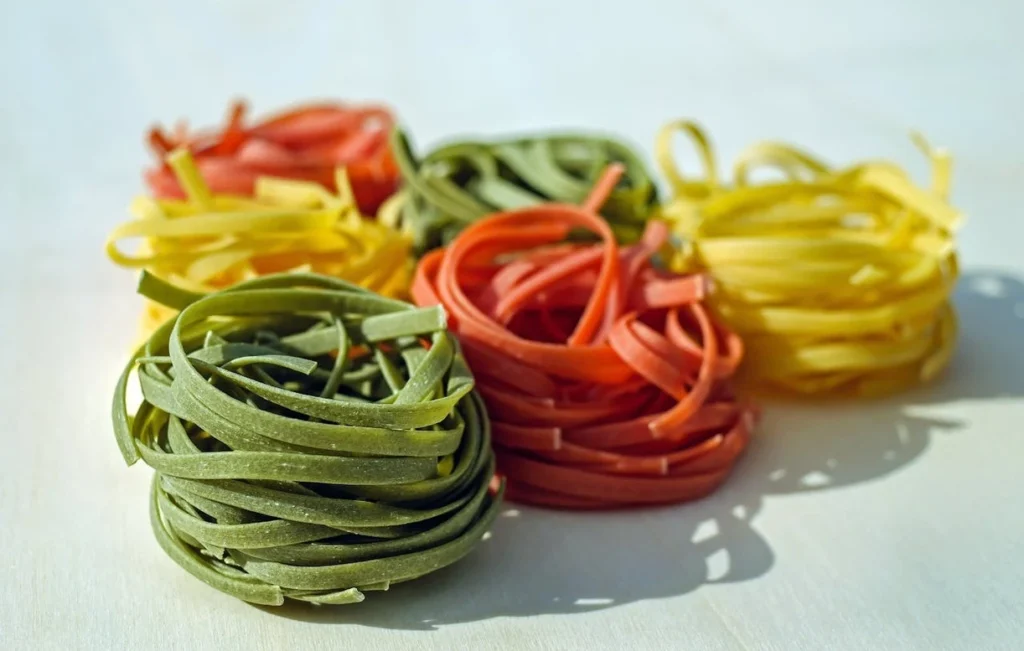
Many people find that eating vegetarian meals improves their energy levels and digestion. Plus, plant-based diets can lower the risk of chronic diseases.
Incorporating more plant-based meals into your diet can have numerous benefits. These meals are typically lower in fat and calories, helping you maintain a healthy weight.
Additionally, consuming more vegetables increases your intake of essential vitamins and minerals. You also contribute to environmental sustainability by choosing vegetarian options. Plant-based cooking encourages creativity and innovation in the kitchen.
In this vegetarian spaghetti recipe, you can expect a colorful array of fresh ingredients. The recipe features ripe tomatoes, bell peppers, and spinach, bursting with flavor. You will create a savory sauce that complements the pasta beautifully.
As you cook, you will discover how easy it is to whip up a delicious meal that satisfies your cravings. Enjoy a tasty dish that is simple yet impressive.
how to cook vegetarian spaghetti with jar sauce?
Cooking vegetarian spaghetti with jar sauce is simple and rewarding. Start by choosing your favorite jarred marinara sauce. This will create a quick and flavorful base for your dish.
Heat a splash of olive oil in a pan over medium heat. Add minced garlic and diced onions to the oil. Sauté them for a few minutes until they are fragrant and slightly golden. This step adds an extra layer of aroma to your sauce.
Next, it’s time to enhance your sauce with some fresh veggies. Chop bell peppers, zucchini, or spinach into bite-sized pieces. Add these to the pan with the garlic and onions.
Cook for a few minutes until they are tender but still crisp. These veggies not only boost the nutrition of your dish but also add color and texture. Once they are ready, pour in your jarred marinara sauce and stir well to combine.
While your sauce simmers, cook the spaghetti according to the package instructions. Usually, this means boiling water and adding the spaghetti, cooking it until al dente.
When your pasta is ready, drain it and add it directly to the pan with the sauce. Toss everything together until the spaghetti is well-coated.
For the finishing touch, sprinkle grated Parmesan cheese or nutritional yeast on top. Serve hot and enjoy a delightful meat-free meal in no time!
What Are The Secrets of Best Vegetarian Spaghetti?
How to cook vegetarian spaghetti Bolognese?
- Sauté Veggies: Start by sautéing chopped onions, garlic, and bell peppers in olive oil. Cook them until they’re soft and fragrant.
- This step lays the foundation for your sauce. The aroma will fill your kitchen, creating an inviting atmosphere. It’s a simple but crucial step that adds great depth of flavor.
- Add Tomatoes: Next, stir in canned diced tomatoes and tomato paste. This combination creates a rich, hearty base for your vegetarian spaghetti Bolognese.
- You’ll want to mix well, ensuring that the veggies and tomatoes blend together. This mix will become the soul of your dish, bursting with freshness and warmth.
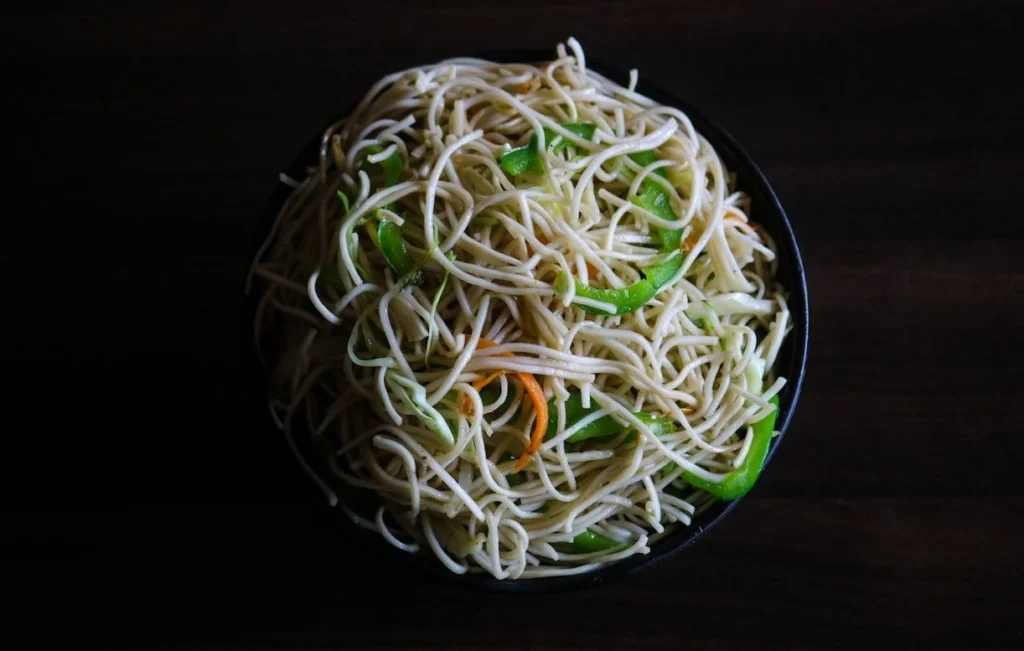
- Season Well: Now, sprinkle in herbs like basil and oregano. A pinch of red pepper flakes adds a nice kick. These seasonings bring out the best flavors in your sauce.
- Let it simmer together for about 20 minutes. This step allows all those delicious flavors to meld perfectly.
- Combine with Pasta: After the sauce simmers, toss it with your cooked spaghetti. Gently mix to coat every strand with that flavorful sauce. This ensures that each bite is full of taste.
- Serve & Enjoy: Finally, top your dish with fresh basil and a sprinkle of Parmesan. This delightful finish elevates your spaghetti bolognese. Enjoy every bite of your tasty vegetarian meal!
How to cook vegetarian spaghetti?
- Start Cooking the Pasta
Start by boiling a pot of salted water. This is the first step to a great vegetarian baked spaghetti recipe. Once the water is boiling, add your favorite spaghetti.
Cook it until it reaches al dente, which usually takes about 8-10 minutes. Stir occasionally to prevent sticking. You can taste it a minute before the time is up to check if it’s just right!
- Sauté Vegetables for Flavor
While the pasta cooks, sauté some chopped onions, garlic, and bell peppers. Heat a bit of olive oil in a pan over medium heat. The aroma will fill your kitchen! After a few minutes, add in fresh vegetables. Consider zucchini, mushrooms, or spinach.
These veggies add flavor and nutrition to your dish. Season everything with salt, pepper, and a sprinkle of Italian herbs. This step is crucial for that perfect spaghetti taste.
- Combine Pasta and Veggies
Once your pasta is done, drain it well. Then, combine the pasta with your sautéed veggie mix. If you want a delightful sauce, add a splash of pasta water.
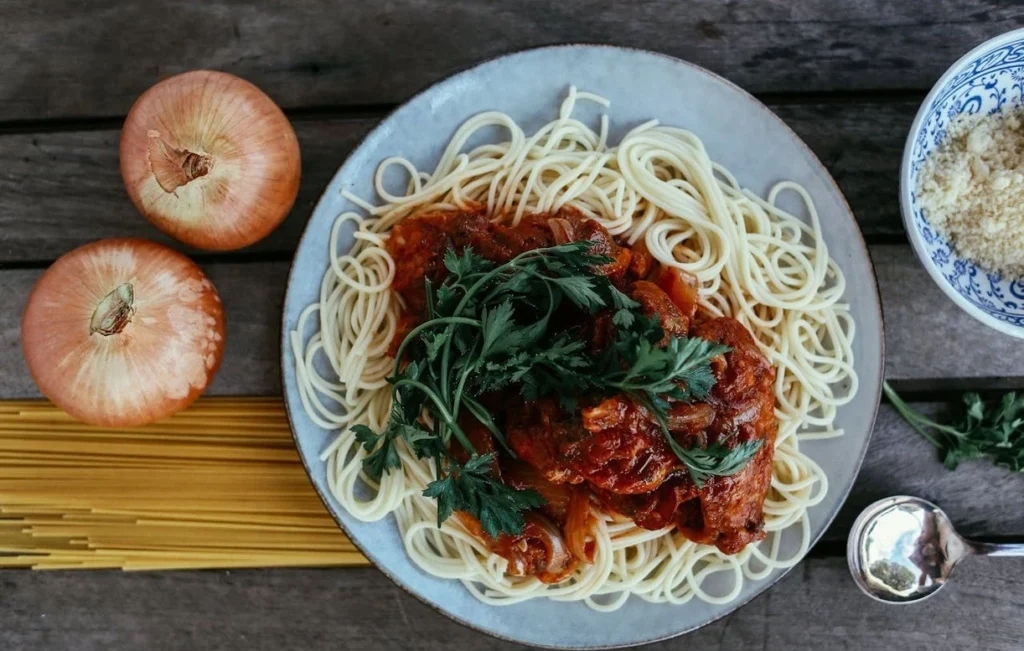
Toss everything together to ensure the sauce evenly coats the pasta. Serve your vegetarian spaghetti hot. You can top it with parmesan or nutritional yeast for a tasty, meat-free meal!
Ingredients Instructions Notes
Main Ingredients for Vegetarian Spaghetti
To make a delightful vegetarian spaghetti, you’ll need some essential ingredients. Here’s a handy list for you:
- Spaghetti pasta (choose whole grain or gluten-free if needed)
- Olive oil (extra virgin for added flavor)
- Garlic (fresh cloves for the best taste)
- Onion (yellow or red, diced)
- Bell peppers (any color, sliced thin)
- Zucchini (cut into half-moons)
- Mushrooms (sliced; any variety works well)
- Canned crushed tomatoes (or fresh tomatoes, diced)
- Fresh basil (for garnish)
- Salt and pepper (to taste)
Suggestions for Variations and Substitutes
Feel free to mix things up based on your preferences. For instance, you can swap the bell peppers for spinach or kale for a different texture. Here are more substitutes you might consider:
- Use whole grain pasta instead of regular spaghetti for added fiber.
- Replace crushed tomatoes with marinara sauce for a quick option.
- Add protein such as chickpeas or lentils for a heartier meal.
- If you’re not a fan of mushrooms, try using eggplant or cauliflower instead.
Tips for Selecting Fresh Ingredients
Choosing the freshest ingredients can elevate your dish. When selecting vegetables, look for:
- Firmness: Choose vegetables that feel firm and are free from bruises.
- Color: Vibrant colors often indicate freshness. Look for bright greens and rich reds.
- Smell: Fresh garlic and herbs should have a strong, pleasant aroma.
- Seasonality: Buying seasonal produce can enhance flavor and reduce costs. By following these tips, you’ll set a great foundation for your vegetarian spaghetti.
Step-by-Step Cooking Instructions
Preparing the Pasta
Begin by filling a large pot with water. Add a pinch of salt. This enhances the pasta’s flavor. Bring the water to a rolling boil. Once boiling, add your spaghetti. Stir occasionally. This prevents sticking. Cook according to package instructions, usually around 8-10 minutes.
For a firmer texture, aim for al dente. Test the pasta a couple of minutes before the end of cooking time. Drain the spaghetti in a colander, saving a cup of pasta water. This starchy water can help thicken your sauce later.
Making the Sauce
In a separate pan, heat some olive oil over medium heat. Add chopped onions and garlic. Sauté until soft and fragrant. Next, introduce your favorite vegetables.
Bell peppers, zucchini, and spinach work well. Stir them frequently. Cook until tender, about 5-7 minutes.
Now, pour in your canned tomatoes. Season with salt, pepper, and herbs like basil or oregano. Let it simmer for about 15 minutes. This allows the flavors to meld together, creating a rich sauce.
Tips for Achieving the Perfect Texture and Taste
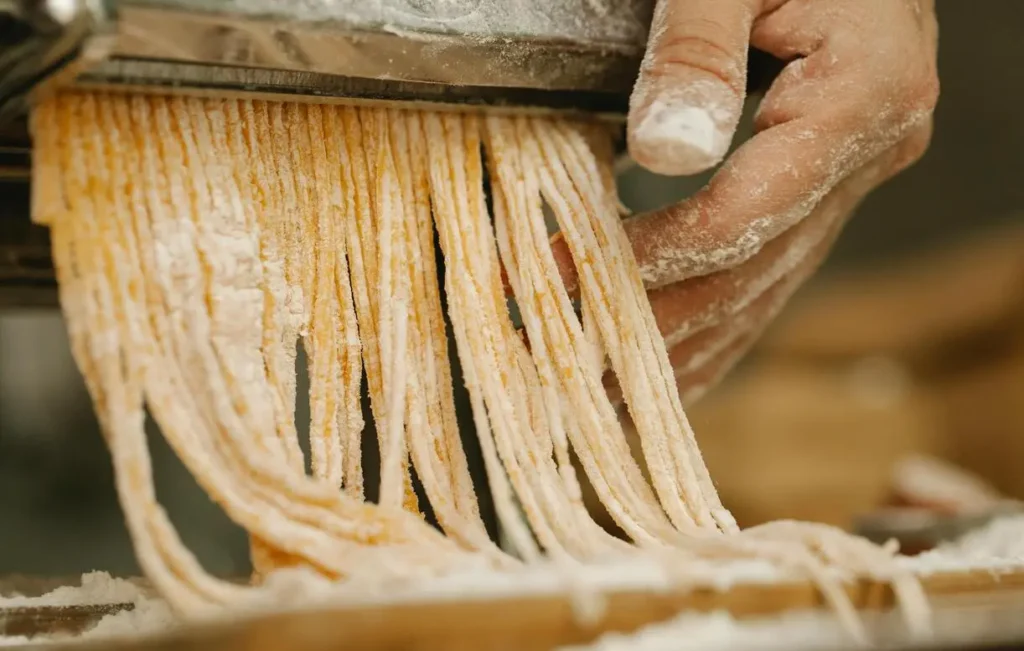
To enhance the dish, combine the drained spaghetti with the sauce in the pan. Toss it gently, allowing the pasta to absorb the flavors. If the sauce seems too thick, add some reserved pasta water.
This will help achieve a creamy consistency. Taste and adjust seasoning as needed. A splash of balsamic vinegar can elevate the dish.
Finally, sprinkle fresh herbs and grated cheese on top before serving. Enjoy your delicious vegetarian spaghetti!
Serving Suggestions
Ideas for Garnishing the Spaghetti
When it comes to serving your one pot vegetarian spaghetti, garnishing can elevate the dish. Consider these options for a burst of flavor and color:
- Fresh basil leaves add a fragrant touch.
- Grated parmesan or a vegan cheese alternative offers a creamy finish.
- A sprinkle of red pepper flakes can provide a bit of heat.
- Sliced olives or capers add a briny contrast.
- Toasted pine nuts or walnuts give a delightful crunch.
Feel free to mix and match these garnishes to find your perfect combination. A drizzle of high-quality olive oil can enhance the flavors and add a glossy finish.
Pairing with Sides and Beverages
Your vegetarian spaghetti deserves great company. Here are some side dish ideas that complement the flavors:
- A simple green salad with a light vinaigrette.
- Garlic bread or a crusty baguette for dipping.
- Roasted vegetables seasoned with herbs.
- Grilled or sautéed asparagus for a fresh crunch.
For beverages, consider pairing your meal with:
- A chilled glass of white wine or sparkling water.
- Herbal tea or lemonade for a refreshing non-alcoholic option.
- A light beer to balance the flavors.
Presentation Tips for a Delightful Dining Experience
Presentation plays a key role in how you enjoy your meal. Here are some tips to impress your guests:
- Use large, shallow bowls for a casual yet elegant look.
- Twirl the spaghetti into a neat nest using a fork for a beautiful shape.
- Add garnishes in the center for a pop of color.
- Consider using colorful plates to contrast with the spaghetti.
- Serve with extra garnishes on the side for guests to customize their plates.
With these serving suggestions, your vegetarian spaghetti will shine on the table, creating a delightful dining experience.
Nutritional Benefits of Vegetarian Spaghetti
Overview of the Health Benefits of a Vegetarian Diet
Eating a vegetarian diet has numerous health benefits. Many people choose it for better heart health, weight management, or improved digestion.
By incorporating more plant-based foods, you reduce saturated fat intake and increase fiber consumption. This combination can lower cholesterol and reduce the risk of chronic diseases like diabetes and heart disease.
Key Nutrients in the Ingredients Used in the Recipe
Your vegetarian spaghetti recipe is packed with essential nutrients. Here are some key ingredients and their benefits:
- Whole Wheat Pasta: Rich in fiber, this helps with digestion and keeps you full longer.
- Tomatoes: They provide vitamin C and antioxidants, which fight inflammation and boost your immune system.
- Spinach: A great source of iron and vitamins A and K, important for overall health and vision.
- Garlic: Known for its immune-boosting properties, garlic adds flavor and health benefits.
How This Meal Fits Into a Balanced Diet
Vegetarian spaghetti can be a part of a balanced diet when combined with various food groups. It offers carbohydrates, protein, and healthy fats.
To enhance its nutritional profile, pair it with a side salad or some roasted vegetables. This way, you ensure you’re getting enough vitamins and minerals.
Enjoying meals like this encourages diversity in your diet, which is key for overall health.
Final Thoughts
Recap of Key Points
In this article, you learned how to cook a delicious vegetarian spaghetti. You discovered the essential ingredients, including pasta, fresh vegetables, and flavorful herbs.
We discussed various techniques to enhance the taste, from sautéing garlic to choosing the right sauce. Remember, the key is to balance flavors and experiment with what you have.
Make It Your Own
Now, it’s time to make this recipe your own. Feel free to add your favorite vegetables or spices. You might want to try different sauces like pesto or marinara.
Each variation allows you to create a unique dish. Have fun with the process. Cooking should be enjoyable!
Share Your Experience
We invite you to share your experiences and tips with others. Did you add a twist to the recipe? How did it turn out? Sharing helps create a community of cooking enthusiasts.
Join discussions with friends or online. Your insights may inspire someone else to try this tasty spaghetti!
FAQ
What is veggie spaghetti made of?
Veggie spaghetti is typically made from spiralized or julienned vegetables, such as zucchini, squash, or carrots.
Do vegetarians eat spaghetti?
Yes, vegetarians can eat spaghetti as long as the sauce and toppings are plant-based.
What veggies can I add to pasta?
Broccoli, spinach, cherry tomatoes, zucchini, bell peppers.
Is Prego spaghetti sauce vegetarian?
No, Prego spaghetti sauce is not vegetarian.

